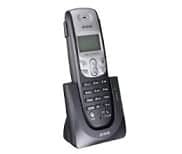The first thing we are going to do before entering fully into the meaning of the term wireless is to know its etymological origin. In this case, we can state that it is a word that derives from Latin. Exactly it is the result of the sum of the following lexical components:
-The prefix “in-”, which means “no” or “without”.
-The noun “aeramen”, which is synonymous with “wire” or “copper instrument”.
-The suffix “-ico”, which is used to indicate “relative to”.
The communication system or device that lacks cables is classified as wireless . This means that there is no physical connection with a base or with another element.
 A wireless communication , in this framework, allows the sending of data from a sender to a receiver without there being an agent to physically connect the two points. This type of technology uses a specific frequency band and low-power radio frequency waves to achieve the transmission of information.
A wireless communication , in this framework, allows the sending of data from a sender to a receiver without there being an agent to physically connect the two points. This type of technology uses a specific frequency band and low-power radio frequency waves to achieve the transmission of information.
A cordless phone , on the other hand, is a device that connects to a base without using a cable. This base, in turn, has a connection to a landline telephone network and an electrical outlet.
Cordless phones have rechargeable batteries . The user can move up to about 100 meters from the base with the cordless phone and make or receive calls. In this way you have the possibility of communicating more comfortably, without so many physical limitations.
A wireless microphone , meanwhile, captures sounds and is responsible for their transmission through radio frequencies. These microphones have an FM or AM transmitter for this purpose.
In the same way, we find the fact that there are many tools that also have the peculiarity of being wireless. Thus, today, we can come across both drills and chainsaws or hedge trimmers that have a rechargeable battery thanks to which they can be used to perform different tasks without the need to be connected to electric current.
And the same thing happens in the field of computing. Specifically, there are different devices and peripherals that no longer require being connected via a cable. We are referring, for example, to mice or keyboards that do not need to be connected through a USB port to the computer.
These peripherals can either run on batteries or do so through WiFi or Bluetooth connections, for example.
In the kitchen area we also come across small appliances that work wirelessly and, therefore, facilitate their use. A good example of this can be many mixers.
At a general level, it can be said that all wireless equipment contributes to mobility . Whoever speaks through a cordless telephone or uses a wireless microphone is not obliged to remain still nor is he limited to the limited range of a cable, but rather has a much wider range of action , related to the transmission of waves.
